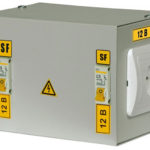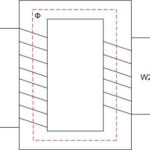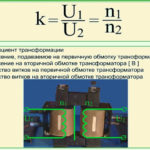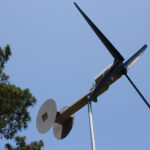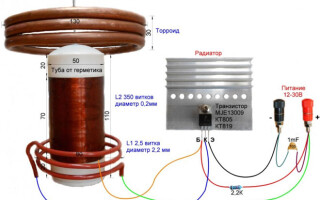One of the most common inventions of Nikola Tesla is considered a Tesla transformer. The operation of this device is based on the action of resonant electromagnetic standing waves in coils. This principle is the basis of many modern things: fluorescent lamps, kinescopes of TVs, charging devices at a distance. Due to the phenomenon of resonance, when the frequency of the primary winding oscillation coincides with the frequency of oscillation of the secondary winding standing waves, an arc flashes between the coil ends.
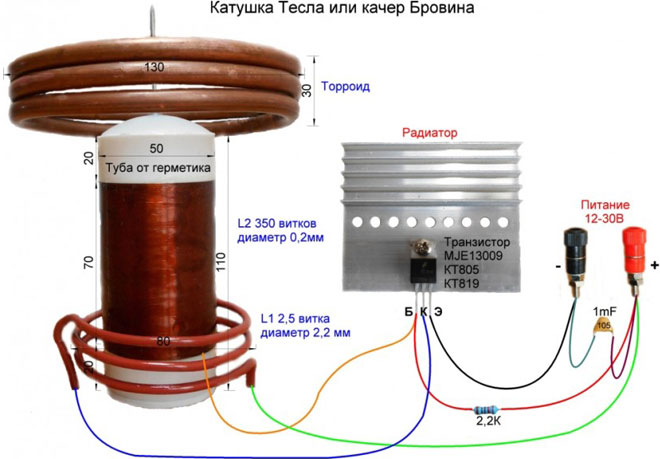
Despite the apparent complexity of this generator, it is possible to make it yourself. The technology of how to make a Tesla coil with your own hands is contained below.
Contents
Parts and principle of operation
A Tesla transformer consists of a primary coil, a secondary coil and a harness consisting of an arrester or chopper, a capacitor and a terminal that acts as an output.
The primary winding consists of a small number of turns of copper wire with a large cross section or a copper tube. It can be horizontal (flat), vertical (cylindrical) or conical. The secondary winding consists of a large number of smaller windings and is the most important part of the design. It should have a length to diameter ratio of 4:1 and at its base there should be a grounded protective ring of copper wire to protect the electronics of the installation.
Since the Tesla transformer works in pulse mode, its design is characterized by the fact that it does not include a ferromagnetic core. This reduces the mutual induction between the windings. The capacitor, interacting with the primary coil, creates an oscillating circuit with an arrester included in it, in this case a gas arrester. The arrester is assembled from massive electrodes, and for greater wear resistance it is additionally equipped with heat sinks.
The principle of operation of Tesla coil is as follows. The capacitor is charged by the transformer through the choke. The charging rate directly depends on the inductance value. Charged to a critical level, it will cause the breakdown of the arrester. After that high-frequency oscillations are generated in the primary circuit. At the same time the arrester is activated, removing the transformer from the common circuit by shorting it.
If this does not happen, then losses can occur in the primary circuit, negatively affecting its operation. In the standard circuit, a gas arrester is installed in parallel with the power supply.
Thus, the Tesla coil at the output can produce a voltage of several million volts. From this voltage there are discharges of electricity in the air in the form of corona discharges and streamers.
It is extremely important to remember that these products generate high potential currents and are lethal to life. Even low-power devices can cause severe burns, nerve endings, muscle tissue, and ligament damage. Capable of causing cardiac arrest.
Design and assembly
The Tesla transformer was patented in 1896 and is simple in design. It includes:
- A primary coil with a winding of copper wire from 6 mm², in sufficient number for 5-7 turns.
- Secondary coil made of dielectric material and wire up to 0,5 mm in diameter and long enough for 800-1000 turns.
- Discharge arrester hemispheres.
- Capacitors.
- A protective ring of copper wire, as on the primary winding of the transformer.
The peculiarity of the device is that its power does not depend on the power of the supplying source. More important are the physical properties of the air. The device can create oscillating circuits by different methods:
- using a spark gap arrester;
- with an oscillator on transistors;
- with tubes.
To make a Tesla transformer with your own hands will require:
- For the primary winding - 3 m of thin copper tube with a diameter of 6 mm or a copper core of the same diameter and length.
- To assemble the secondary winding, you need a PVC pipe with a diameter of 5 cm and a length of about 50 cm and a PVC threaded fitting to it. You also need a copper, varnished or enamelled wire with a diameter of 0.5 mm and a length of 90 m.
- A metal flange with an inside diameter of 5 cm.
- Various nuts, washers and bolts.
- Discharger.
- Smooth half-sphere for the terminal.
- The condenser can be made by yourself. You need six glass bottles, table salt, rapeseed or vaseline oil and aluminum foil.
- Requires a power source giving 9kV at 30mA.
The Tesla transformer circuit is simple to implement. From the transformer there are 2 wires with an arrester connected. To one of the wires are connected capacitors in series. At the end is the primary winding. Separately there is a secondary coil with terminal and grounded protection ring.
Description of how to assemble a Tesla coil at home:
- The secondary winding is made by first securing the edge of the wire to the end of the tube. The winding should be evenly, not allowing the wire to break. There should be no gaps between the coils.
- When finished, wrap the top and bottom of the winding with painter's tape. After that, coat the winding with varnish or epoxy.
- Prepare 2 panels for the bottom and top bases. Any dielectric material, a sheet of plywood or plastic will do. Place a metal flange in the center of the bottom base and bolt it down so that there is space between the bottom base and the top base.
- Prepare the primary winding by twisting it into a spiral and securing it to the upper base. Drill 2 holes in it and lead the ends of the tube into them. Fasten it in such a way as to prevent the windings from touching and to keep a distance of 1 cm between them.
- To make the arrester it is necessary to place 2 bolts opposite each other in a wooden frame. It is calculated that when they move they will act as a regulator.
- The capacitors are made as follows. Glass bottles are wrapped in foil and filled with salt water. Its composition for all bottles should be the same - 360 g per 1 liter of water. The caps are punched and wires are inserted into them. Capacitors are ready.
- Connect all the nodes according to the scheme described above. Be sure to ground the secondary winding.
- The total in the primary winding should be 6.5 turns, in the secondary - 600 turns.
The sequence of operations described gives an idea of how to make a Tesla transformer yourself.
Switching on, testing and adjustment
The first start-up should preferably be performed outdoors, and it is also worth putting away all appliances to prevent them from breaking. Remember the safety precautions! To start up, carry out the following steps:
- Go through the entire chain of wires and check that no bare contacts are touching anywhere, and that all assemblies are securely fastened. Leave a small gap between the bolts in the arrester.
- Apply voltage and watch for the appearance of the streamer. If it is absent, a fluorescent lamp or an incandescent lamp is brought to the secondary winding. It is desirable to fix them on the dielectric, a piece of PVC pipe will do. Appearance of a glow confirms that the Tesla transformer works.
- If there is no glow, change the leads of the primary coil in places.
If it did not work the first time, do not despair. Try changing the number of turns in the secondary winding and the distance between the windings. Tighten the bolts in the arrester.
Powerful Tesla coil
A distinctive feature of such a coil is its size, the strength of the resulting current and the method of generating resonant oscillations.
It looks as follows. After switching on, a capacitor is charged. When the maximum level of charge is reached, a breakdown occurs in the arrester. In the next step, an LC circuit is formed, a circuit formed by connecting the capacitor and the primary circuit in series. This creates resonant oscillations and high power voltages in the secondary winding.
At the same time something similar can be assembled at home as well. To do this, you should:
- Increase by 1.5-2.5 times the diameter of the coil and the wire cross section.
- Make the terminal in the form of a toroid. For this purpose aluminum corrugated wire with a diameter of 100 mm will do.
- Replace the DC source with an AC source of 3-5 kV.
- Make a reliable ground connection.
- Make sure your wiring can withstand the load.
Such transformers can generate power up to 5kW and create corona and arc discharges. At the same time, the maximum effect is achieved when the frequency of both circuits coincide.
Related articles:
